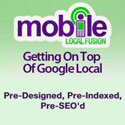Keyword Research Strategy 101
Posted on December 21, 2011 by CJ Admin Team
Keyword research has now become an essential part of a web building process for just about any type of web site. It is no longer enough to just have a fancy looking web site.
In this article, we’re going to go through a basic keyword research strategy. If you’re new to the internet and just about to set up your own web site, this strategy is for you.
Keywords are simply words or, more often, phrases that you would like your web pages to be found with, in search engines. If you had a web site about babies, for example, you would want your web pages to appear when someone searches for “baby names” or “baby furniture” etc. You wouldn’t want your web pages to appear in search results for the keywords “fishing rod” or “hunting guide” because a person doing that search will not be interested in your site.
The first step in your keyword research strategy is to find keywords that are relevant to your web site theme. A good place to start is to just brainstorm of words that you yourself might use to find your web pages. A big mistake that newcomers make is to stop at that. You may be quite surprised that the keyword that you think will be used by others may not be used by them at all.
Fortunately, there are keyword research tools out there that you can use to help you find out what terms are being searched for. One tool you could use is Good Keywords, which is a free keyword generator software that you can use to do a quick keyword research for your terms and their demand (i.e. how many times they’re been searched for in a month). You can download a free copy of Good Keywords from http://www.goodkeywords.com
Typing in the word “baby” in Good Keywords brings up the following results (first 10 only):
baby name 1016116
baby gift 760898
baby r us 493144
baby 474805
baby cds 109643
baby name meaning 103122
baby shower 89866
baby boy music video 88601
personalized baby gift 87855
baby shower game 78860
The second step in your keyword research strategy is to choose “good keywords”. As you can see, the “baby” theme is quite popular. Should you use all terms as your keywords? You could if you wanted to. Depending on the number of competitors you have (i.e. other webmasters who are targeting your chosen keyword), you’d more likely be better off focusing on a tighter theme. A quick search for the word “baby” on Google, comes up with 1,000,000,000 results. With so many competitors what are your chances of ranking in the Top 10? You could focus your entire site on just “baby shower”, for example.
To have a better idea of which keywords to choose, you could use a keyword research tool like WordTracker (http://www.wordtracker.com). WordTracker provides information on how many times your keyword phrase is being searched for in a day, the number of competitors and something else called KEI (Keyword Effectiveness Index). All else being equal, the higher the KEI, the better.
WordTracker has a trial account you can experiment with but it brings back just 30 results, which is a good start to helping you focus on a niche. Typing in “baby shower” in WordTracker brings back the following top 5 KEI results for the following keywords:
152.264, baby shower footprint invitation
73.085, free printable baby shower games
61.711, free baby shower games
52.127, baby shower games
37.829, free printable baby shower invitations
According to WordTracker keyword research, KEI above 15 is a good keyword.
Once you’ve chosen a set of “good keywords”, you next step in your keyword research strategy is to actually use the keywords. You should start off your site by creating web pages with content optimized for the high KEI keywords. How do you do this exactly?
- Focus one keyword phrase per web page
- Use the keyword phrase in your web page Title Tag
- Use it in your keywords meta tag
- Use it in your description meta tag
- Have it appear in the first 250 words of your content
- Strive for 5-7% keyword density (5-7 keywords and/or keyword phrases per 100 words of text).
-Use your keyword phrase in your H1 tag.
-Use keywords and/or keyword phrases in your image ALT tags.
- Use it as the text to any outgoing links on the page.
- Have the keyword appear once at the end of your content.
There’s a lot more to keyword research then I have time to explain in this article. But this basic keyword research strategy should be enough to get you started in the right direction.
Article Source: http://EzineArticles.com/347869
Facebook Comments:

































